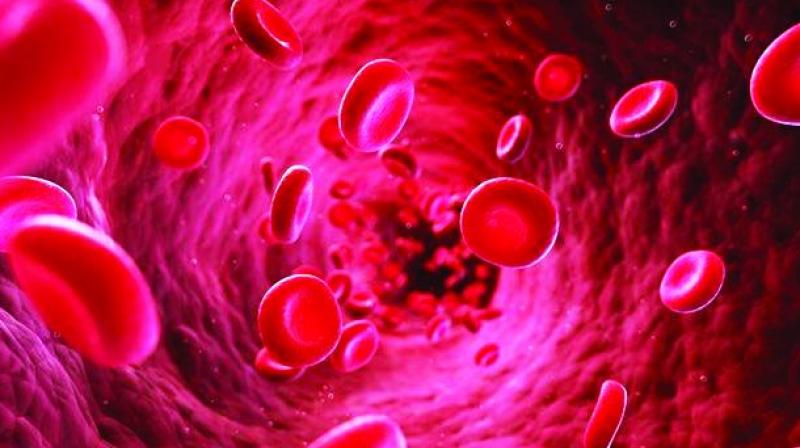Anaemia cases on rise in Tamil Nadu

Chennai: Despite planned interventions and government initiatives, more than 53 per cent of women and adolescents are anaemic in India. In Tamil Nadu, the situation is grave, the state has in fact seen a rise in the prevalence of anaemia over the last one decade. In order to eradicate anaemia, health experts discussed challenges and solutions at Anaemia Convention in the city.
The forum addressed major challenges and gaps in the management of iron-deficiency anaemia in Tamil Nadu along with the introduction of a nutrition-awareness intervention with iron and folic acid supplementation uptake to control and treat anaemia.
According to National Family Health Survey-4 for the year 2015-16, 54.8 per cent women aged around 15-49 years and 50.4 per cent of children under 5 years of age were reported to be anaemic in Tamil Nadu. Among non-pregnant women aged 15-49 years in the state, 53.9 per cent people from urban areas and 56.9 per cent people from rural areas were anaemic.
“India has the highest number of women with anaemia globally, which increases the probability of maternal and child mortality and has significant economic implications for the nation's development. To detect and treat anaemia, IMA has launched a national program -Mission Pink Health, which has now been introduced in Tamil Nadu to educate adolescent girls (10-19 years of age) and raise awareness on menstrual hygiene, dietary needs and requirements, behavioral changes and to detect and treat anaemia,” said Dr L. Yesodha, Indian Medical Association (IMA), state vice president, Tamil Nadu.
Under Mission Pink Health, the state chapter of IMA will work with schools, especially government schools to detect the condition and tackle drop-outs.“Deficiency Anaemia (IDA) is a condition characterised by a lack of healthy red blood cells and if not diagnosed and treated at the right time can impair quality of life, organ function, cognitive function and decrease overall survival rate. In India, there is a great denial to get tested and that poses a huge challenge,” says Dr.Jaishree Gajaraj, senior consultant, department of obstetrics and gynaecology, Apollo Hospitals.
Anaemia can be caused by both nutritional and non-nutritional factors. Common causes of IDA include inadequate dietary intake and/or low availability of iron in diet, deficiencies of vitamin B, folic acid, malnutrition, obesity and vitamin A, chronic loss of iron due to parasitic infestation such as hookworm infection and schistosomiasis. IDA in women can be caused by excessive, heavy menstruation, iron-deficient diet, low iron absorption capacity, childbirth, pregnancy & lactation, frequent blood donation.

